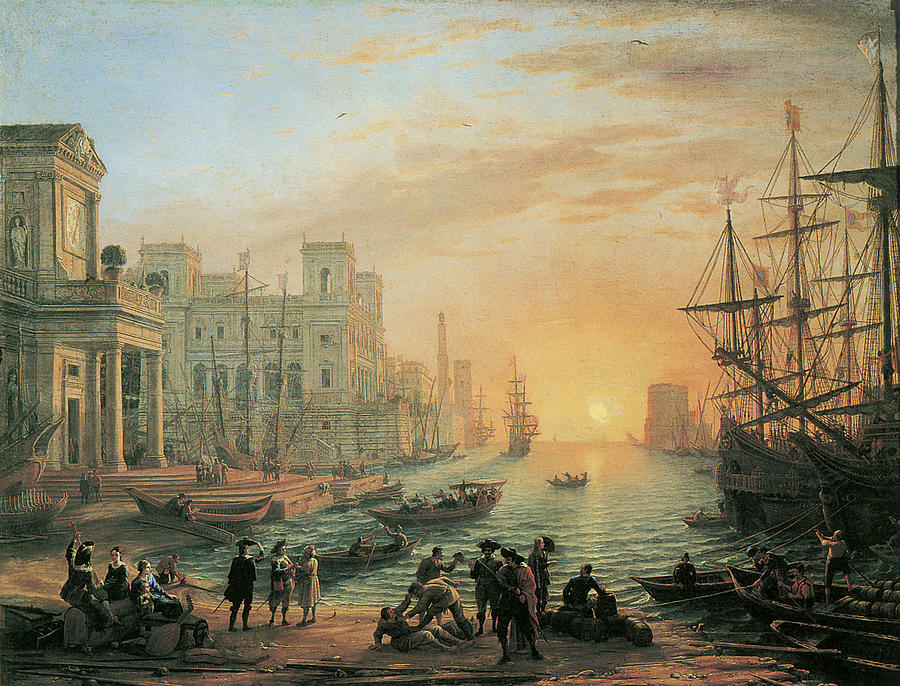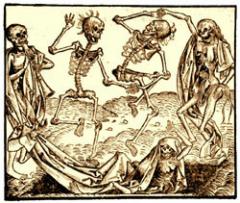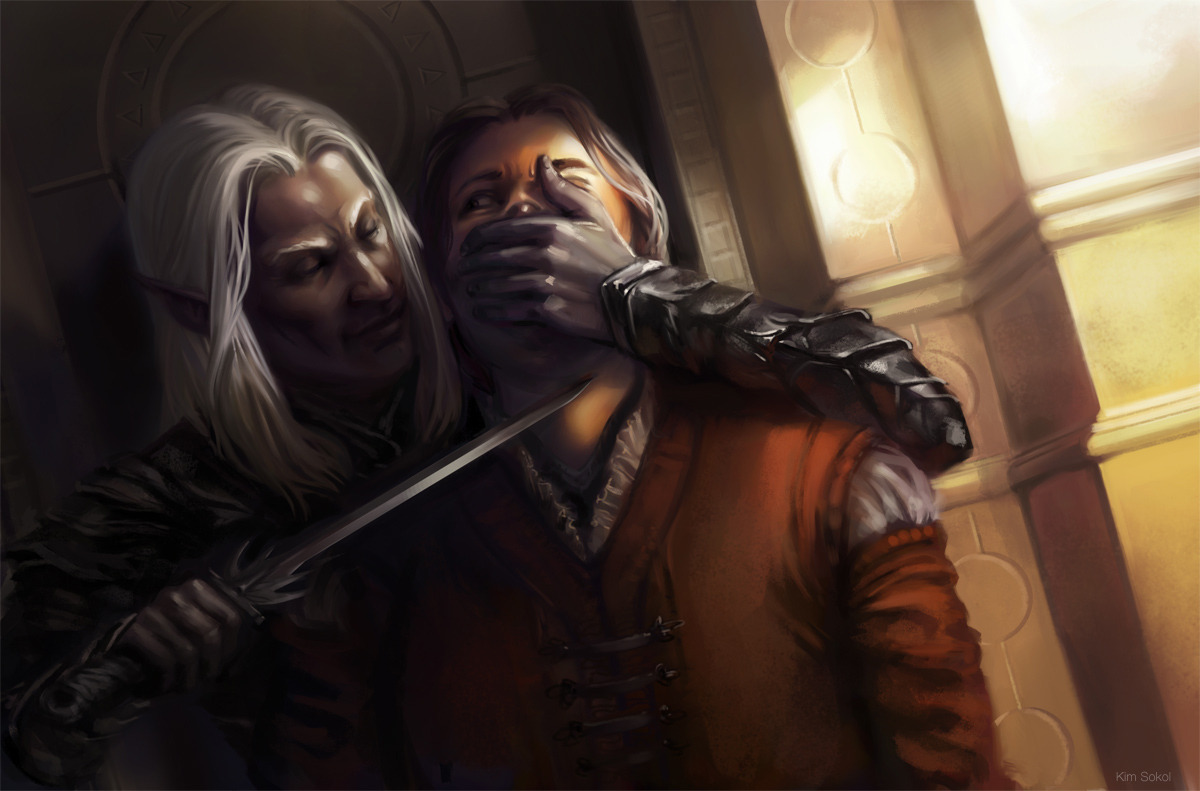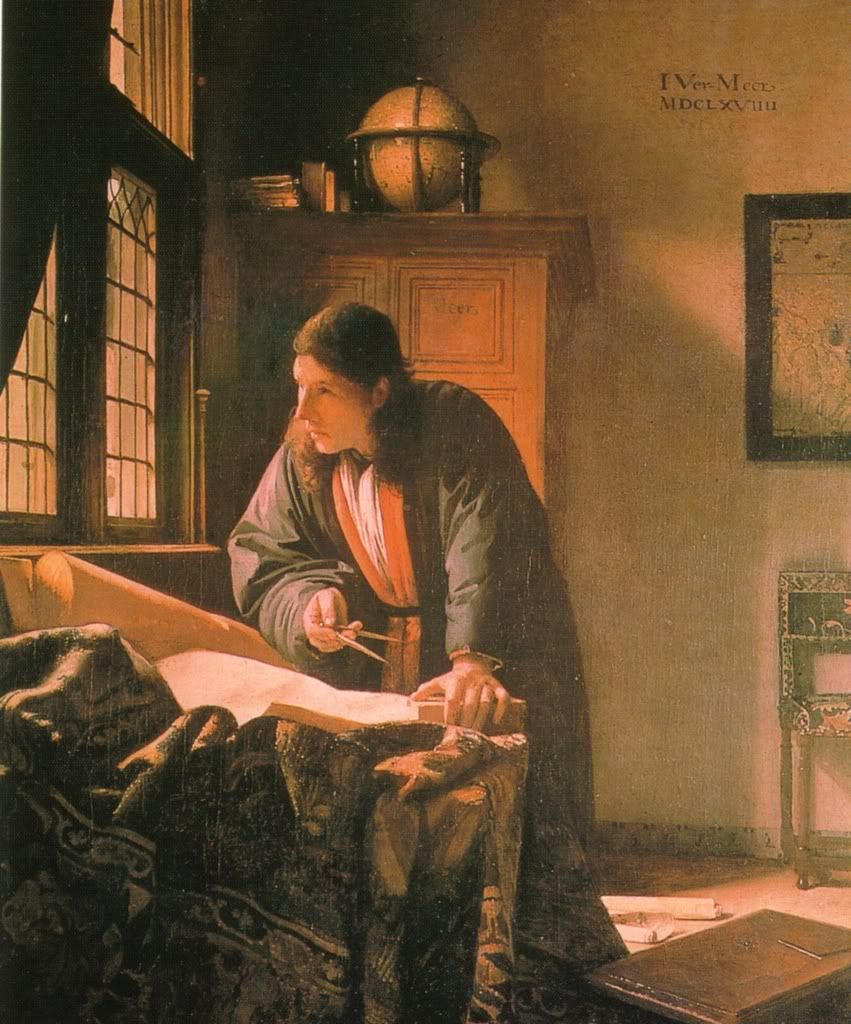Continuing my Warlords of Lingusia....an ongoing project, really. I found a couple annoying issues I needed to correct after posting, which is sort of the point of this exercise....to force me to focus more on this work. It's tough having to periodically update and revise a world setting due to dramatic in-game changes perpetrated by players, but ultimately well worth it, some of the best games I've ever run. So if you read this and hear tales about time-traveling agents of Huuarl, some tale of the old timeline involving the Cataclysm, or the era of the Reckoning....know that each of these, and many more, were the direct focus, result or byproduct of prior campaigns and the actions of the player characters!
The Dark Ages and the Warlords Era
The time after the Plague Years
was one of struggle and rebuilding as so many people had perished that entire
civilizations lay crumbled and forgotten. Eventually humanity and its kin
pulled themselves back up, though every culture was left scarred by the
experience, wary of the terrible threat the undead represented toward the
living.
By 3,500 a.w. the world has at last risen from the era of the Long Night
and the dark ages following the Plague Years. In this new modern era, the
present-day kingdoms of Lingusia are in strife as the old power structures have
been shaken to the core. Old empires are long gone, new young empires rise to
power, warlords seek to consolidate or expand their power base and no one knows
who will come out on top.
In the present, most men are largely ignorant of the ancient history of
the world, as the traumatic events of the Long Night followed by the Plague
Years did much to erase man’s knowledge of his long history in the world. It is
only through the efforts of groups such as the Esoteric Order of Warenos that
the lore of the world has been retained.
As such, most men and women of LIngusia are driven by a sense of
personal empowerment and a desire to forge their own destinies. Most of the
current kingdoms of the world are forged by the might of muscle and sword, and
the elite aristocracies of old are a dim memory. The greatest forces in the world
today are warlords who have seized power, now kings who have inherited it.
A Note About the Lost Histories
The
chronomancers of Huuarl know that the world was once destined for a different
future, one in which the entire planet and then the cosmos was consumed by
4,000 a.w., the apocalyptic date of no return. In 3,500 a.w. Huuarl dispatched
his relic of time to be used by a handful of brave adventurers, to return to
the ancient past in a veritable thanatos gambit, to stop the one action that set
all of the events in motion toward the apocalypse.
The scholar Andrithar had studied much ancient lore, and was readily
seduced by the discovery of profane tomes in the name of Slithotep. He had
become a student and priest of the dark god, and in time grew to crave more
knowledge. Slithotep was eager to strengthen the forces of Chaos and to
ultimately become supreme rule of the chaos pantheon, but could not act
directly. He bade his scholar to journey abroad, and for Andrithar to seek the
means of the world’s end.
Andrithar stumbled across the slumbering mind of the Kraken, the
greatest of the twelve Skaeddrath. There he made contact, and the Kraken was
able to send him visions in dream. The Kraken gave Andrithar the necessary
clues to find the ancient entrance to his subterranean prison, and Andrithar
followed. Once there, the bond was sufficiently strong that the Kraken began to
weave a terrifying ritual spell, feeding it to the eager scholar in the form of
a spoken prophecy. That spell, once completed, would have filled the enire
tome, called the Somes Malificus Oraculum, the Book of Evil Prophecy. With this
tome Andrithar would go on to cast the most potent, destructive spell ever
known, burning himself out in the process, but creating a series of seven linked
prophectic events that would, like cosmic keys, unlock the seven events
necessary to lead to the destruction of the prison gates to the Skaeddrath and
their terrifying freedom.
Thanks to the agents of Huuarl, this never happened. Unfortunately, the
schemes of Huuarl did not go unnoticed; the vestige of Unarak, lurking in the
domain of shadow since his sundering that ended his plague, was waiting for
this opportunity, and stole away with the heroes chosen by the god of time to
stop the ritual of prophecy. Unarak’s vestige lacked divinity and was but a
shadow of itself, but like all undead was nigh unkillable. This vestige in
time, made its way to its mortal self in this era, the young but aspiring
wizard and conqueror known in this time as Anharak, freshly victorious from seizing power in the Silver Mountains. There, it proceeded to bond with it’s
younger, living self, to at last set in motion plans of a more certain
victory…or so it thought.
One of Unarak’s first tasks was to find the very ancestors of his most
hated enemy, the one who struck the blow which sundered him: Thalion, the
avatar of the Sun in this alternate future. Unarak’s agents quickly hunted down
and killed all of the distant relatives of Thalion’s line, ending the avatar’s
lineage prematurely. It is considered a certainty by the chronomancers that
much that happened during the Long Night was due to Unarak’s own schemes in
this time. Many such actions have gone undocumented, but there are moments
where the distinct absence of key figures in history suggest that Unarak has
been at work.
Some of the chronomancers of Huuarl note that it is clear that time has
a certain resilience; the loss of Thalion changed things, certainly, but in his
place arose the avatar Kazdenar, a bearish warrior who served Hargameth. In the
end, it was Hargameth’s blows that sundered Unarak.
Aside from Unarak’s schemes affecting the timeline, the erasure of the
creation and use of the Book of Evil Prophecy led to the expurgation of many
legendary events historically. The following is a catalog of those events which
occurred in the original timeline, but which are now either absent or happened
in distinctly different fashion:
The
War of Strife
This war may have transpired, though the specific details of how and why
it came about are uncertain. It is believed, for example, that Xarion was not
revived in 2,068, for indeed he may not have perished in a manner consistent
with the original tales of the Dark War. Likewise, the events surrounding the
restoration of Corrigan the witch-queen unfolded much sooner than in this era,
due to the manipulation of the time line; she is believed to have manifested
(and lived) much longer, during the Dark War era, as an ally to either Unarak
or Xarion.
There are records suggesting that Bellasko Strallikus, the lead figure
in the War of Strife, still rose to power and did indeed lead a fanatical jihad
against the Hyrkanian Empire. It is believed by many that this was the first
major blow against the Empire, leading to its decline and eventual collapse.
The
Fate of the Last Prehunates
Unarak apparently learned of these three and took advantage of that
knowledge to gain his own spark of divinity. Though the events by which he
achieved this are unknown, Unarak managed to somehow find and awaken, then
capture Eskandar, Diannysos and Zelkarod. Many event surrounding these three
happened differently in this new timeline; Diannysos, for example, arose from
her remote realm in Chigros to journey the world and eventually discover
Nekro’Zahn, the fabled Well of Creation, giving her the necessary lore to
formulate a plan by which she and the surviving prehunates could at last
destroy the gods in revenge. In the new timeline, this never came to pass; the
exact details remain unknown, but Dianyssos is said to have been absent from
the scene until sometime in late 2,400 when she appeared as one of the undead
shadow gods in thrall to Unarak,along with Eskandar and Zelkarod.
The prehunates being caught and changed by Unarak in to his divine
thralls, perhaps even willingly if Unarak convinced them his plan would allow
them a final revenge against the gods they so desired, caused a series of
events to disappear from the timeline. Specifically:
Eskandar’s
release from the amulet in which is soul was trapped was performed,
ultimately, by Unarak and he was not released in the region of Thylanalien
as a weapon by the ashtarth of Modra.
Diannysos
did not discover Nekro’Zahn, nor did she later concoct the scheme to
destroy it (the Cataclysm).
Zelkarod
did not unite his companions in an effort to hasten the departure of the
gods from the mortal plane in the events of the Reckoning.
As the
Reckoning never occurred, the war of order and chaos never ceased;
likewise, the gods never departed to the Outer Realms of the Celestial
Kingdoms, and thus were not severed from all contact by the Cataclysm.
The
Absence of the Reckoning and the Cataclysm, and the Greater Significance of the
Shadow Conflict and the Plague of Unarak
The legendary event of the Reckoning was a time when the war between
chaos and order was exposed as a done deal; this may not have been so (for the
elemental chaos was all pervading) but the implication was that the essence of
Malakor, the first chaos entity, had dissipated and was no more. Centuries
later it was told that the Red Dragon Comet would return (around 2,470) and
unleash his essence once more, but before that time it seemed as if the lords
of Order had at last won. With the Skaeddrath seen as safely locked away, the
Orbs of the Cosmos united in power, and the war over, the lords of Order
retreated to higher dimensions of existence, far beyond the mortal realm and
the planes of reality, to dimensions undreamed of by ordinary minds.
When the Cataclysm struck in 2,476 it was due to the manipulations of
the prehunates at last attaining their ultimate revenge; the Orbs of Existence
had been hidden for centuries, and when at last they were found the potent Orb
of Oblivion was used to destroy the Well of Creation, which destroyed the power
source linked to the planar realms, severing Lingusia from the planes and
simultaneously shattered the barriers of the Skaeddrath prisons. The twelve
chaos titans could at last awaken.
In the new timeline, none of this happened. The prehunates were detoured
by Unarak from their intended goals, which were themselves only a manifestation
of the Book of Evil Prophecy and its dire ritual. Without the ritual spell to
prompt the actions of the world to lead to these two great periods of change, they
did not happen.
The net result was that the gods have remained more vigilant in insuring
the mortal plane remains intact, to prevent their prisoners, the Skaeddrath,
from ever awakening. The cults of the Skaeddrath still exist, but they are few
and far between; the world has countless millennia before it before a new
crisis could lead to the destruction of the world at the hands of these chaos
titans.
In spite of the chronomantic intervention which led to the dramatic alteration of the timeline, one commonality between this timeline and the prior one was the eventual rise of the sea waters caused by the mass melting of the polar ice along the edges of the world. This period, called the Deluge, took place over a century and wreaked havoc on the coastlands of the world, as well as the Island kingdoms of Karaktu, reducing the landmass of that region and forcing the exodus that led to the founding of Golmadras. The exact reason for this transition, once believed to have been caused by the Cataclysm by those few agents of Huuarl who still recall the history of the old timeline, remains unknown.
The
Red Dragon Comet of ,2470-2,476
One major event did transpire much as it did in the original timeline:
the Red Dragon is a comet of terrible import, and it has always existed. The
comet did pass through the solar system from 2,470 to 2,476, and is foretold
that it will do so again in another twelve centuries, as it always has. When it
passes by chaos-meteors rain down upon the world, and the forces of chaos find
themselves again on the rise. Each appearance of the comet predicts a great
disaster; as it turns out, the very seeds of Unarak’s grand Plague came from
this comet, and so Unarak, already risen to power as part of his Shadow
Pantheon, was waiting for its arrival, to hasten his own dark shadow upon the
world.
The red dragon comet has previously appeared in 1,268-1,274, and before
that in -3 to 3 a.w. during the War of the Gods. It will appear again in 3,672.
There is already a rumor among some prophets that Unarak,
once defeated, will rise again as a new plague sweeps the world at that time.
The
Rise of New Empires
Agasar, Golmadras, Nordamar, Enarrion…all are new kingdoms and empires
in their own right. The kings and emprerors of old are largely forgotten,
though nearly legendary in their own rights; tales of the Emperor Usyllyses and
his successor Gilrad and Phyxillus are legendary to this day. No one knows what
happened to these heroes of old, but many tales are told of their fantastic
deeds.
The
Fall of the Thargonid Empire
The Thargonids were a potent force of trolls united under the powerful
queen Invidia. The Thargonids eventually threatened all of old
Hyrkania during the original timeline, but less so in the current timeline. The
trollish empire was demolished during unrecorded events of the Long Night,
though it is certain that the legendary emperor and empress Gilrad and
Phyxillus were responsible. The Thargonid Mountains, though doomed to be
eternally monster-haunted, are now the location of the new capitol Hyraphon, of
the northern kingdom Nordaman. Here, the Nordaman king rules. This kingdom is a
much smaller domain, and consists of the loose city-states of the north, who
all still remember their lost heritage as the greatest empire of man.













